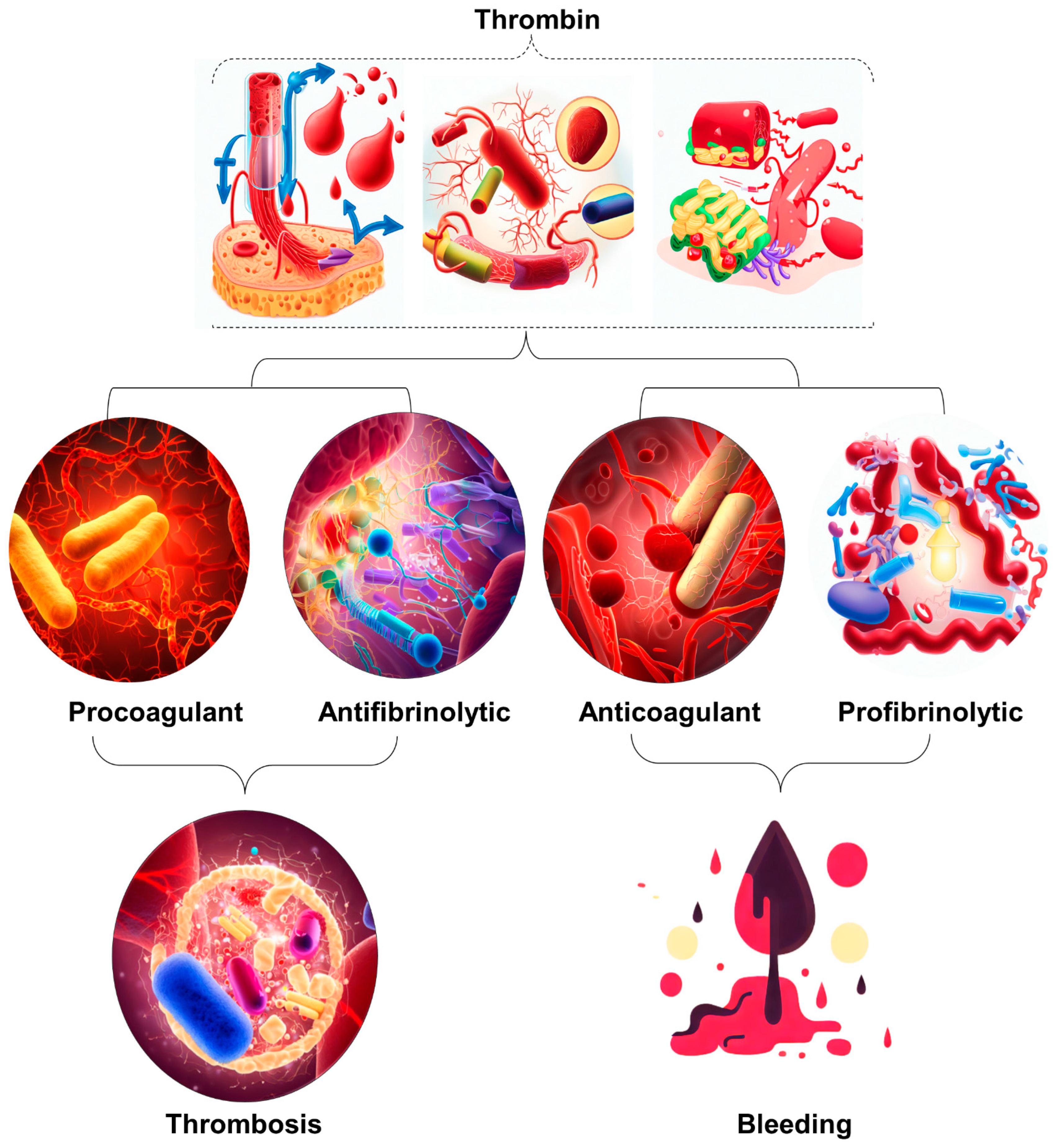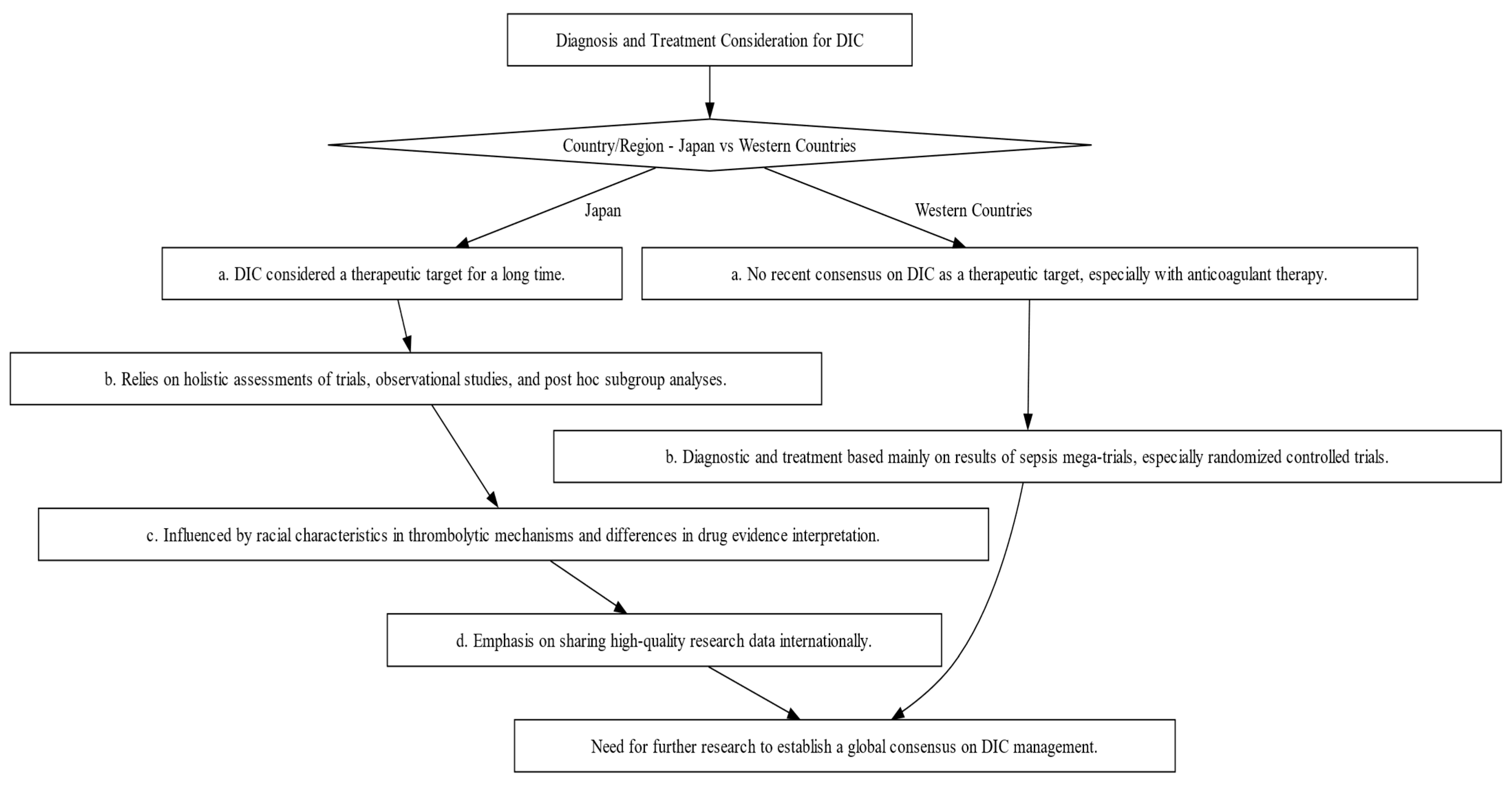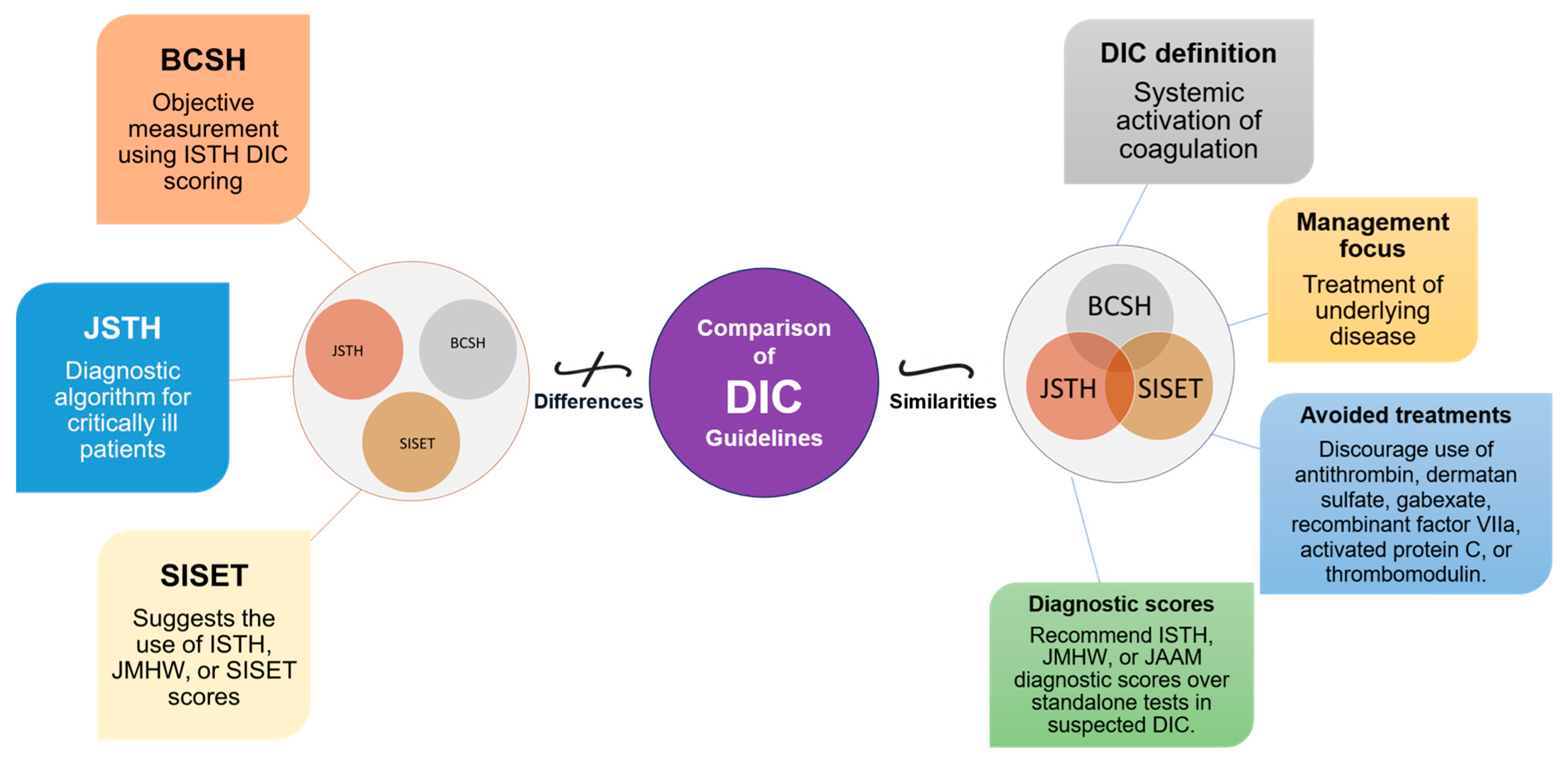Disseminated intravascular coagulation (DIC) is a pathological disease that often manifests as a complication in patients with sepsis. Sepsis is a systemic inflammatory response caused by infection and is a major public health concern worldwide.
1. Introduction
Disseminated intravascular coagulation (DIC) is a pathological disease that often manifests as a complication in patients with sepsis. Sepsis is a systemic inflammatory response caused by infection and is a major public health concern worldwide
[1]. To understand the evolution of the sepsis concept,
Table 1 provides an overview of the differences between the traditional approach based on systemic inflammatory response syndrome (SIRS) and the sepsis-3 definition, which emphasizes organ dysfunction or risk of death
[1][2][3][4][5][6]. Coagulation disorders that can lead to the development of DIC are often observed in sepsis. DIC is a disease that results in microvascular coagulation, decreased organ perfusion, organ failure, and an increased risk of death. The incidence rate of DIC is estimated at 2.5 cases per 1000 people, with an 8.7% increase over the two decades
[1][3]. Sepsis disrupts the blood coagulation process and leads to disruption of hemostasis; however, among these, DIC represents the most serious complication. Approximately 50–70% of patients suffer from DIC. In approximately 35% of cases, it manifests itself overtly. The diagnosis of DIC typically involves the assessment of coagulation markers but lacks sufficient specificity. Therefore, it is crucial to distinguish DIC from diseases characterized by platelet count
[7][8]. Unfortunately, several patients who develop thrombocytopenia from a variety of causes are often initially misdiagnosed as having disseminated DIC. This misdiagnosis can result in these patients not receiving the treatment they need. The coagulation process is closely intertwined with the system and is linked to other inflammatory responses
[9][10]. The term immune thrombosis refers to the interaction between coagulation and innate immunity
[11]. Traditionally, it has been assumed that coagulation activation is triggered by a tissue factor on monocytes and macrophages that is induced by microorganisms and their components, so-called pathogen-associated molecular patterns (PAMPs)
[12].Tissue factor (TF) is a potent initiator of coagulation
[13] and induces proinflammatory responses through the activation of protease-activated receptors (PARs)
[13][14]. Phosphatidylserine on the cell membrane has been identified as an important coagulation activator
[15]. Apart from these PAMPs, it has also been found that damage-associated molecular patterns (DAMPs) released by injured cells, such as B. cell-free DNA histones and high mobility group box one protein (HMGB1), contribute to the initiation of coagulation
[9]. Extracellular neutrophil traps (NETs), composed of DNA fibers, nuclear proteins, and antimicrobial peptides, have been found to enhance thrombogenicity
[9].In addition to activation of coagulation, suppression of fibrinolysis is an important feature of sepsis DIC. PAI-1 released from damaged endothelial cells inhibits fibrinolysis and leads to the development of a thrombotic phenotype associated with coagulopathy (
Figure 1)
[16][17].
Figure 1. Illustration of the occurrence of excessive thrombin formation in DIC resulting in either bleeding or thrombosis. The specific outcome is determined by the predominant change disrupting the delicate balance between procoagulant and fibrinolytic effects. The dynamic interaction between procoagulant and fibrinolytic mechanisms in DIC plays a crucial role in determining the clinical manifestations of the disease. Therefore, it is imperative to implement timely and targeted therapeutic strategies to maximize patient outcomes.
Table 1. A Comparative Analysis of Sepsis Definitions: Traditional SIRS-based vs. Sepsis 3 Approach
[18].
| Feature |
Previous Sepsis Definitions (SIRS-Based) |
Sepsis 3 Definition |
| Definition |
Sepsis is SIRS + confirmed or presumed infections * |
Sepsis is life-threatening organ dysfunction due to a dysregulated host response to infection |
| Organ Dysfunction Criteria |
Based on individual clinical criteria (e.g., temperature, heart rate, respiratory rate, WBC count) |
Organ dysfunction defined as an increase of 2 or more points in the Sequential Organ Failure Assessment (SOFA) score |
| Clinical Criteria |
Relatively simple criteria (e.g., T > 38 C or <36 C, p > 90/min, RR > 20/min or PaCO2 < 32 mmHg, WBC > 12 or >10% immature band forms) |
qSOFA (HAT) **: Hypotension (SBP ≤ 100 mmHg), Altered mental status (any GCS < 15), Tachypnea (RR ≥ 22) |
| Classification of Severity |
Sepsis, Severe Sepsis, Septic Shock |
Sepsis, Septic Shock (Severe Sepsis no longer exists) |
| Diagnostic Accuracy |
Lack of sensitivity and specificity for diagnosing severe sepsis |
Improved predictive validity and accuracy in diagnosing sepsis |
| Use in ICU Patients |
SIRS criteria lacked sensitivity for defining sepsis in ICU patients |
SOFA score superior to SIRS in predicting mortality in ICU patients |
| Use in Non-ICU Patients |
Less accurate in predicting hospital mortality outside the ICU |
Similar predictive performance in non-ICU patients |
| Global Applicability |
Used globally, but lacks standardization and content validity |
Development and validation conducted in high-income countries |
| Prognostic Value |
Limited ability to predict patient outcomes and mortality |
Enhanced ability to prognosticate patient outcomes and mortality risk |
| Emphasis on Infection Trigger |
Inclusion of infection as a crucial component in sepsis diagnosis |
Maintains the importance of infection in defining sepsis |
| Endorsement by Professional Orgs. |
Various organizations endorsed previous definitions |
Not universally endorsed by all organizations |



